
AUSTRALIA is undeniably an efficient producer of wheat, considering our soils and climate.
Throughout Australia’s period of growing wheat, farmers have used the newest technology and science to generate greater yields.
However, how does our advance in yields compare with other nations around the world?
The charts below show the five-year moving average yields for Australia, versus a range of different countries/regions:
- World
- Argentina
- Canada
- EU
- Former Soviet Union nations
- North America
- US
By separating into different regions, we can get a better comparison than the more simplistic world comparison.
The main purpose is to show the trend in yields over time and whether we are trending at similar levels to other regions. There are newly developed growing areas such as the Former Soviet nations in these regions, and more developed such as North America and Europe.
A very basic look at the charts shows, in the majority of cases, yields advancing at a slower rate in Australia versus other regions, both established and new.
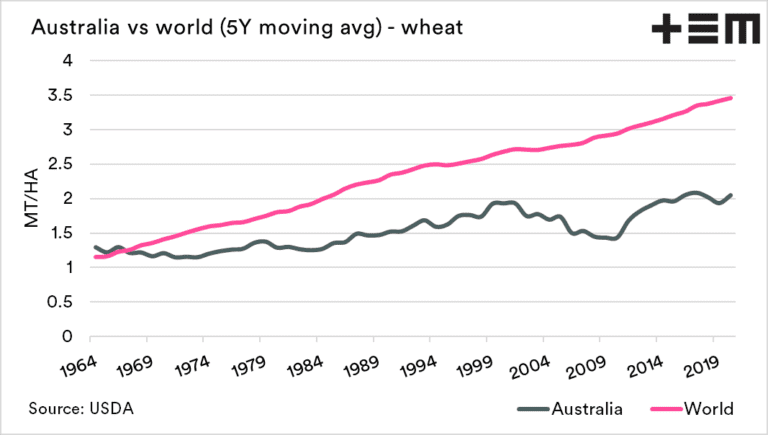
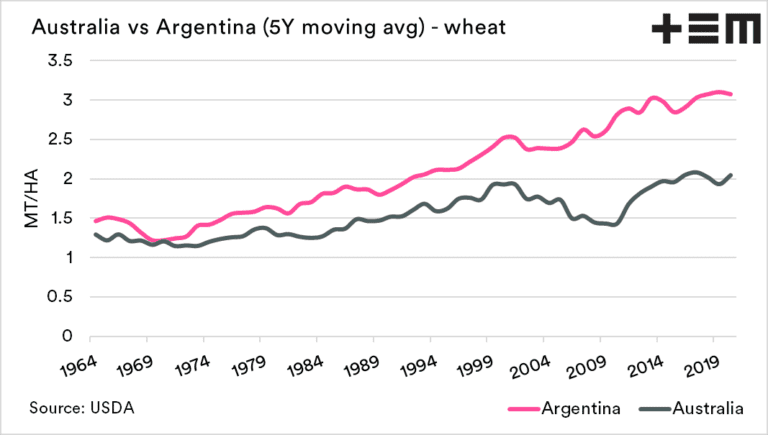
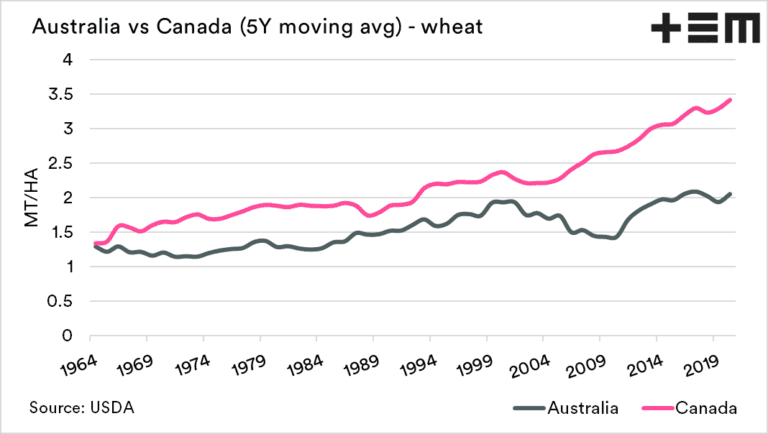
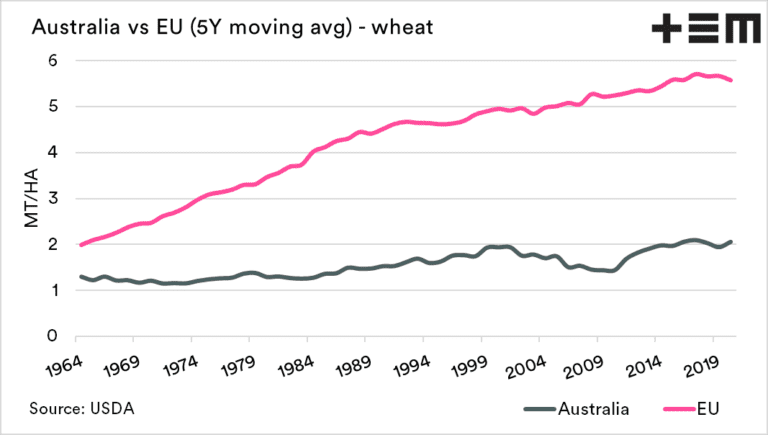
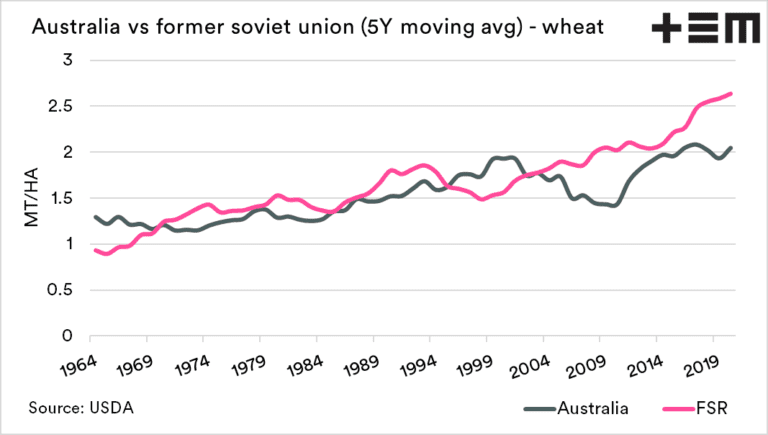
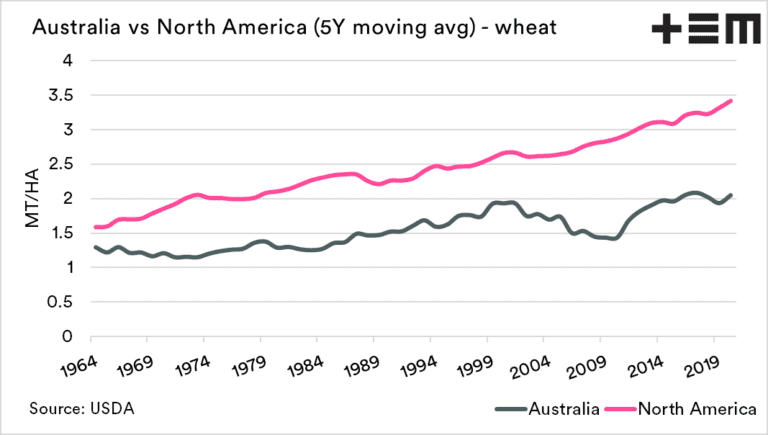
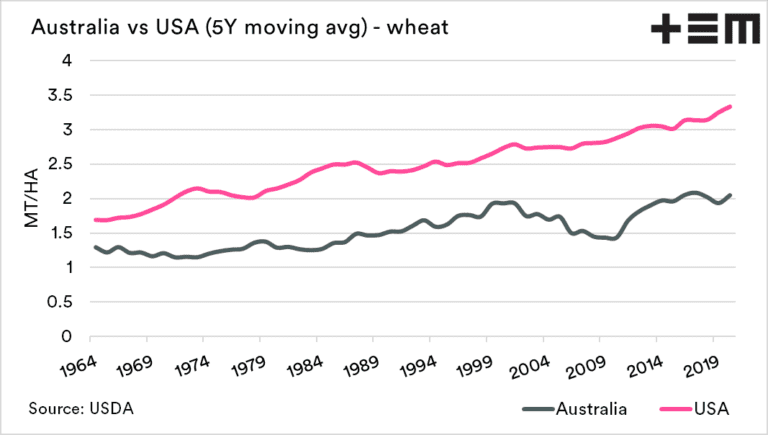
This article was originally published on the Thomas Elder Markets website: https://www.thomaseldermarkets.com.au/
To view original article click here

The Australian wheat yields are not directly comparable with many other countries, particularly those in the northern Hemisphere.
Much of the Australian grain belt has no real winter (unlike much of N.America ,Europe and the Soviet Union) which has months of snow and low temperature weather with a relatively short spring and summer. Overall annual evaporation rates are much lower than Australia.
Australian farmers are very efficient users of rainfall with numbers of up to 20kg of grain per millimetre of rain per hectare of crop. Our annual evaporation rates are 2500-3000 mm with an average precipitation of 400-800 mm. Due to our arid climate I consider that we utilise the resources remarkably well.
Hi R.J Esdaile. I am conducting some research at the moment into using native plants in Australia as replacements for crops that were brought into the country during settlement such as wheat. I found it interesting that you brought up the fact that climate has a major effect on the production of wheat in Australia because, don’t you think that would be a major component in realising that maybe wheat shouldn’t be farmed on large scales in Australia? Specifically my research has delved into the use of kangaroo grass as an alternative for wheat, mainly because of the fact that many explorers and surveyors when Australia was settled, wrote about how prolific the grass was and how it was used by the Indigenous population. The Aboriginals would harvest the seed, crush it and then bake it, creating bread just the same way we would when using wheat. I think the most important factor in the research is the fact that kangaroo grass actually grows more efficiently in Australia, mostly due to the fact that it is a native plant. Anyway, I thought you may have found that interesting and maybe think about the fact that maybe we supplement kangaroo grass as an alternative to wheat in Australia! Have a good one, Tim